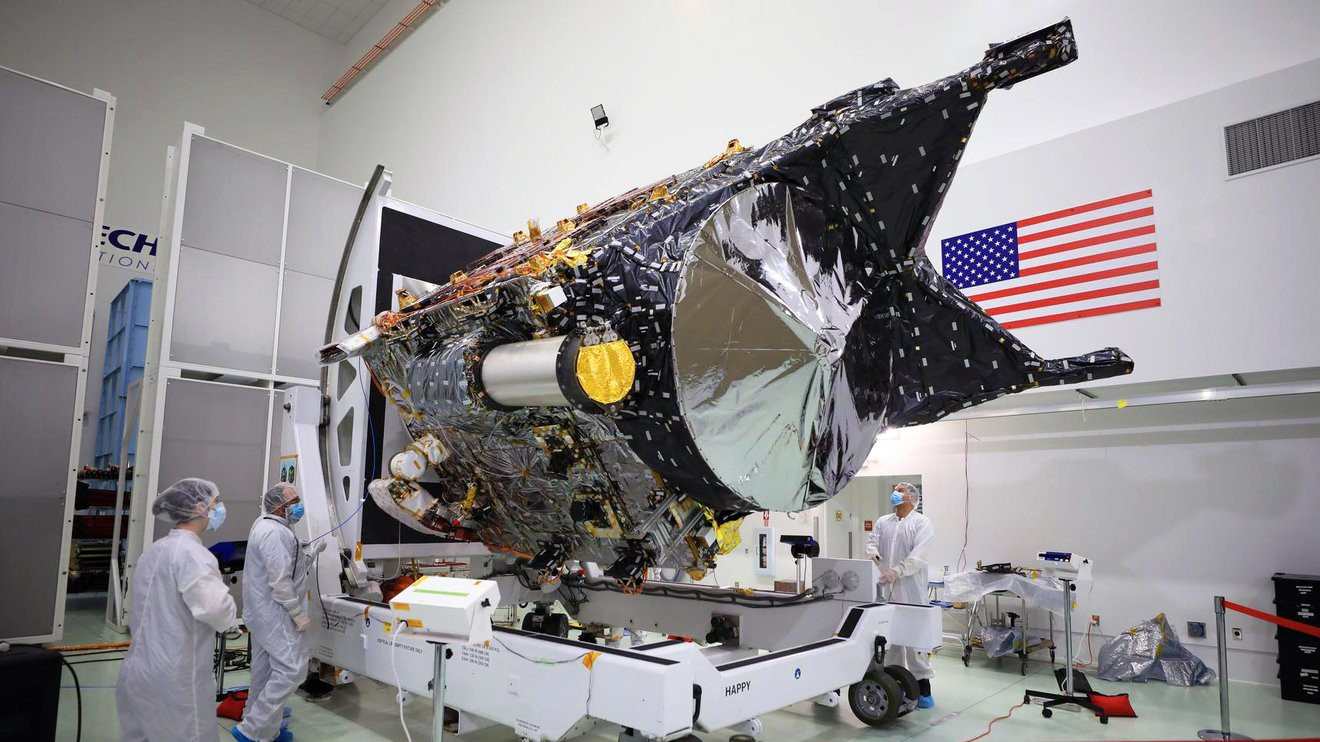This week, NASA achieved a world first by sending a laser beam message to Earth within 50 seconds from a distance of approximately 16 million kilometers. NASA has long been able to communicate with spacecraft using radio waves, but never before has it been able to send data using lasers from such a long distance.
The first light of the gold-capped laser transceiver attached to the asteroid probe Psyche was seen on Tuesday, sending and receiving data via laser beams from a very remote location for the first time. The DSOC experiment aims to demonstrate data transfer rates 10 to 100 times higher than the state-of-the-art radio frequency systems used by spacecraft today.
In the Deep Space Optical Communications (DSOC) experiment, near-infrared laser-encoded data in deep space approximately 16 million kilometers away was beamed to the Hale Telescope at Caltech’s Palomar Observatory in San Diego County, California, NASA announced.
 Photo: NASA
Photo: NASAOptical communications have previously been used to transmit data from Earth orbit and the Moon, but this latest test marks the farthest laser beams have traveled as NASA looks to improve communications capabilities ahead of upcoming missions into deep space.
“Reaching first light is a tremendous achievement,” said Abi Biswas, DSOC project technologist at NASA’s Jet Propulsion Laboratory (JPL). “It successfully detected photons and we were able to send back some data, meaning we were able to exchange ‘particles of light’ from deep space.”
The DSOC transceiver was launched aboard the Psyche spacecraft on October 13, marking the first demonstration of laser or optical communications from remote areas such as Mars. The primary purpose of the Psyche spacecraft was to explore and study Psyche, a unique metallic asteroid, providing information on the history of planet formation and core dynamics. Laser communications systems package data into oscillations of light waves in lasers and encode a message into an optical signal that is carried to the receiver via infrared rays invisible to the human eye.
NASA uses radio waves to communicate with its missions far from the Moon, but near-infrared light packs data into significantly tighter waves, allowing more data to be sent and received. The DSOC experiment aims to demonstrate that data transmission rates 10 to 100 times higher than current radio frequency systems used by spacecraft today are possible, NASA said.
However, since optical communication requires extreme precision to direct the laser beam, it becomes much more challenging to achieve as the distance increases. The further Psyche moves towards its asteroid target, the fainter the laser photon signal will become. Additionally, photons will take longer to reach their destination, creating a delay of more than 20 minutes. Once the data reaches Earth, the control center will need to be adjusted to the spacecraft’s new location.
“The test was the first to fully integrate the ground systems and flight transceiver and required the DSOC and Psyche operations teams to work together,” Meera Srinivasan, DSOC operations leader at JPL, said in a statement. “This was a challenging effort and we have a lot of work to do.” “There is, but we managed to transmit, receive and decode some data for a short period of time.”